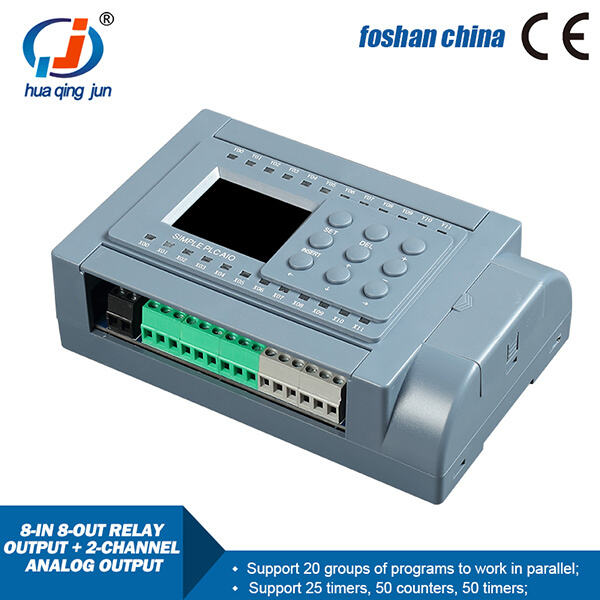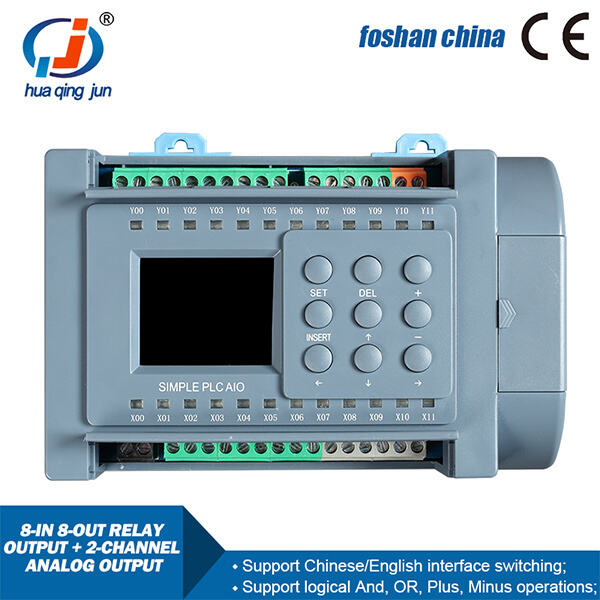PLC analog output module occupies a very important position in the field of modern automation system, is mainly responsible for real-time control and management of such as pressure, temperature, flow rate displacement feedback among physical quantities. These modules act as a link between digital signals from the PLC and continuous precise analog signals that drive several actuators, valves, motors, & sensors. Analog outputs may be thought of in contrast to their digital counterpart as a continuous and proportionate means of adjusting the control signal for physical attributes providing tighter operator adjustment capability leading to more precise process parameter optimization. Now let's take a deeper look into the pros and cons of these two crucial entities.
Analog output modules on PLCs excel at controlling process variables -- the fine, linear finessing of real-world aspects is a major component to cycle factors; this will be reflected in increased efficiency and saved energy. This provides proportional tuning for smoother setpoint changes and a decreased likelihood of overshoots, oscillations in the process loops to increase process stability! In addition, they are designed to be an all-in-one interface for many types of current and voltage signals which make them compatible with a wide range loads and equipment. However, with its benefits come the limitations that PLC analog output modules provide.
One major disadvantage of such devices is that they are highly susceptible to noise and interference, which has the effect of compromising their accuracy and reliability in outputting signals. In addition, analog outputs require more complex setup and calibration than digital outputs which can result in higher installation and maintenance costs. In addition, this system has a limitation in resolution and range of analog outputs which may raise toughness while accurate applications used. PLC analog output modules have to preserve the requirement as mentioned above, but offer an overwhelming advantage which is enough for an optimal control in automation systems.

Implementing this to your PLC system is quite simple as longs you have the required knowledge. Choose a module that matches the voltage and current ranges, resolution and accuracy requirements to get started. Then physically install the module into your PLC rack, and follow the wiring diagram from this company to wire it properly. After the physical setup has been done, go to your PLC programming and configure all sections that need you define settings for this analog output module such as scaling, bias or PID value. In order to obtain accurate and stable output signals, it is essential that calibration be performed using a precise voltage or current source in conjunction with the agilent multimeter. Third, validate the analog output module's functionality by sending out test signals from the PLC and checking them on a scope or meter.

Many reputed brands of automation market manufactures PLC analog output modules such as Siemens, Allen Bradley, Schneider Electric, Phoenix Contact and ABB. These manufacturers provide a broad spectrum of analog output modules based on different specs (voltage, current ranges), accuracy levels, resolution capabilities and response times. They also furnish software tools and complete documentation to smooth the design, integration, calibration of analog modules in the PLC system maintaining them running efficiently with optimal performance.
Beginner's Guide to Troubleshooting Analog Output Modules in Your PLC
Analog output modules with complex automation systems can from time to time experience malfunctions due to reasons such as electrical noise, wiring faults, component failures or software errors. So, it is very important to have the troubleshooting skills which will help us identify and fix these problems sooner. Below are some of the basic steps in troubleshooting analog output modules.
1- Check Wiring connections: As a first check perform inspection of wiring connection verify the continuity in cables and then readout power supply & ground correctly for any possible open or short circuit.
Verify from the PL Programming software what are Module configuration setting like Scaling, Biasing & PID parameters to match with module spec.
Check input signals being sent to the analog output module from PLC, if they are correct check whether these are compatible with operational range of this module.
Whichever is the case, use either a meter or scope to measure the output signals produced by its analog output module comparing these measured values to what you would expect (accuracy), how fine of granularity can be resolved between two adjacent outputs (resolution) and if not held in any constant condition are they changes rapidly over time.
For any long-formation problem, find the manuals from the manufacturer or take technical support in order to solve all unresolved problems perfectly.

Mainly used in Industrial Process control the PLC Analog output modules are very interesting and unconventional which is not limited to use it only for its conventional applications. 5 Creative Ways to Make the Most of Analog Outputs
Producing Musical Tones: Using the output analog to generate changes in voltage, you can create simple musical tones and even use a speaker reproduces music.
LED Lights: Analog outputs provide the capability to offer regulated DC voltages of different values directly to LED lights, allowing for functions including dimming, color mixing and animation lighting effects.
Art Installations That Move : Kinetic art installations often perform resplendent visual displays through a combination of analog outputs to motor, light or other actuatoranging behaviors.
Hydroponic systems: Analog outputs provide fine-grained control over nutrient dosing, pH levels and water flow by regulating pumps or valves in hydroponics applications.
Simulate Physical Signals: The analog outputs are useful for simulating physiological signals such as EKG, EEG or EMG and therefore helpful in the development and validation of medical devices and systems.
In summary: Getting the Most Out of Analog PLC Output Modules
PLC Analog Output Modules, in essence PLC analog output modules are powerful tools that allow us to control physical variables very accurately by proportion. However, based on the invaluable benefits provided by analog outputs and their ability to be utilized in local control loops with refinements made later algorithmically when necessary far outweigh its many limitations. Once properly applied, installed and fine-tuned you can execute your automation system with complete confidence analog output modules. Additionally, interesting uses of the analog outputs demonstrate how versatile and creative new applications are for beyond traditional industrial control scope.
Our product development secured numerous patents. It also won honors such as "National Expertise in High-Tech" Guangdong Province contract-abiding and creditworthy Enterprise". products have been certified by the "IS09001-2015 quality certification" as well as various other certifications including the FCC and CE. The company has collected an array RD talent who possess academic qualifications in automation, electronic engineering communication, as well as other fields. team professionals work closely with customers enhance their overall experience for customers. They also support the majority companies and manufacturers of plc analog output module. Our customers enjoy higher-quality solutions for industry. Furthermore, the business has a professional intelligent production facility. All products come with solid and well-established chips that ensure excellent performance. Customers able to use and purchase with confidence.
The products include RS485 The products RS485 are 232 Ethernet modules Analog inputs modules PLC, analog outputs module HMI, relay module, AC/DC amplifier board as well as switching power supply. There are numerous applications that include parking systems. greenhouse ETC Induction, packaging system. Traffic lighting system. streetlamps control. smart home automation. robot control. water spray control. The production line has a SMT plc analog output module with automatic wave soldering automated packaging machines. Also, it comes with entire set of top-quality control equipment. This guarantees that every product is created "carefully and expertly" customers can purchase and use it without hesitation. We are able to provide various solutions to customers' systems.
company holds a variety plc analog output module patent and has also won honors such as "National High-Tech Expertise" "Guangdong Province Contract-abiding and Credit-abiding Business". The products have been certified "IS09001:2015 Quality Certification". product verified by CE, ROHS FCC SGS and other. certifications. And the company gathered many experienced R D experts with educational backgrounds in automation, electronic engineering, communication engineering, and many more. team experts dedicated to serving the end-users, continually improving customer experience, and supports most Internet of Things companies and equipment manufacturing companies.
Huaqingjun, plc analog output module industrial control manufacturer. company, which has seen 20 years of expansion has grown become 3000sqms large-scale enterprise that focuses on the production, development sales Internet Things. We also have an R D department which can provide technical solutions customers. And our company has 4G module, Ethernet module, WIFI module, Bluetooth module, simple programmable PLC integrated machine RS485 communication module industrial relay module PLC AC/DC power amplifier module and other important products.